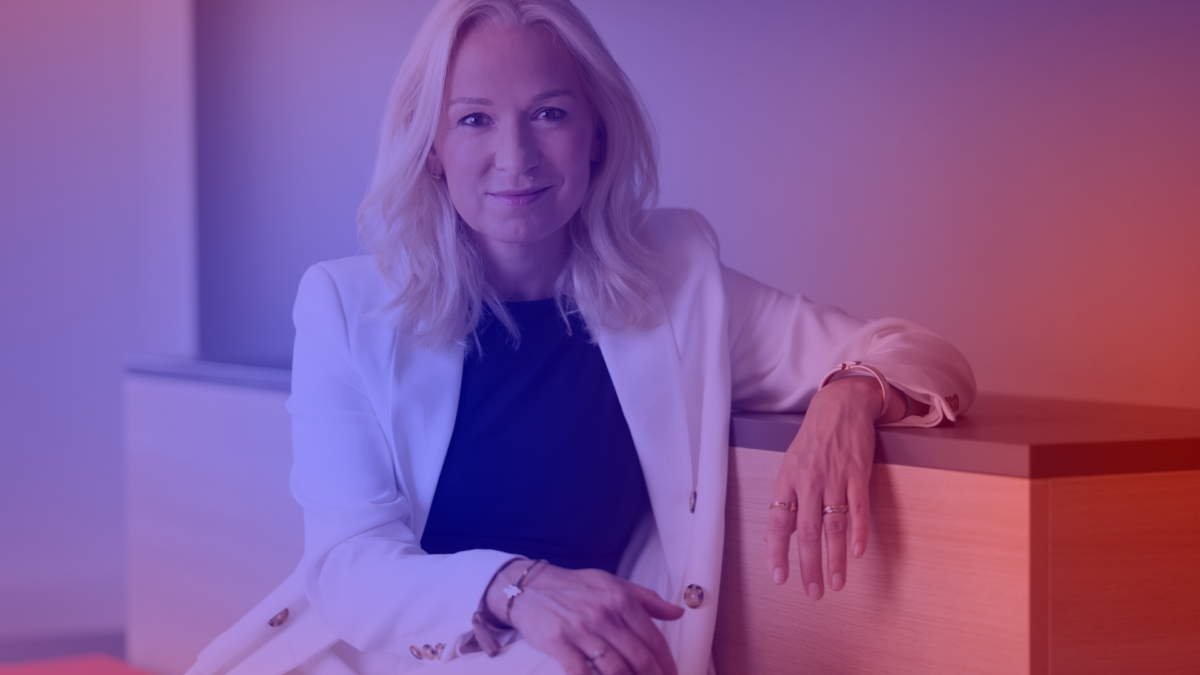Insight Out: A Conversation with ROSSMANN’s Head of Marketing, Petra Czora
Courage, clarity, and measurable impact: Petra Czora, Head of Marketing at ROSSMANN, explains how a fully digital loyalty card became a key driver of success, how POS staging enhances customer experiences, and how she recognizes real transformation.

Marketing’s Boldest Voices: Decisions that align brand, processes, and KPIs
In “Insight Out: Marketing’s Boldest Voices,” leading figures discuss how consistent brand leadership, organizational change, and data-driven accountability come together in practice — and how this creates sustainable impact.
About Petra Czora
Petra Czora is Head of Marketing at Dirk Rossmann GmbH. As the inventor of the drugstore market in Germany, Dirk Roßmann opened the first “market for drugstore goods” in Hanover in 1972. Today, ROSSMANN (headquartered in Burgwedel near Hanover) is one of Europe’s largest drugstore chains with 65,500 employees across Europe and 4,966 stores. In the more than 2,311 ROSSMANN stores in Germany alone, over 1.84 million customers shop every day.
What has been your boldest marketing move — and why would you (not) do it again?
In 2013, we took a close look at launching a loyalty card. As one of the first retailers in Germany, we deliberately chose not to follow the general trend and, instead of a plastic card, introduced a purely digital solution in the form of an app. Beyond the significant development effort, it quickly became clear that this decision would also require follow-up investments in the technical equipment of our stores. At that time, we didn’t have handheld scanners yet. Voices grew louder questioning whether launching the app was the right decision — after all, no one knew how many customers would actually use it. We invested in the app, in store equipment, and at the same time in our customers’ satisfaction. Today, 11 million active users per month are the reward for our team’s and management’s boldness. Would I do it again? Yes. But only if the competition — as back then — were still stuck in their old patterns and gave us the lead to surprise them a second time.
When was the last time you took an uncomfortable step in marketing — and why was it necessary?
Don’t we constantly have to take uncomfortable steps? Isn’t that part of the job and also a strategic necessity? Take, for example, reorganizations within marketing. With steps like these, you always encounter resistance. The usual “we’ve always done it this way” chorus, paired with fear of the unknown. But every time I have initiated such a change at Rossmann over the last 15 years, it has led to a better, more efficient organization. Not instantly, but usually within a few months.
Imagine you had to rethink your marketing from scratch tomorrow — with an unlimited budget. What would you change first?
Set a limited budget! Seriously, I don’t believe that unlimited funds make us better — especially if I’m focusing on impact. But fine, if the budget really were unlimited, I would massively upgrade and stage the point of sale (POS), investing in an exceptional in-store experience.
How do you recognize whether marketing transformation is truly making a difference?
First and foremost in the business figures: For example, can we increase frequency — and with it the Customer Lifetime Value (CLV) — through app usage? Can we turn customers into passionate fans because they not only understand our brand story but love it and see themselves as part of it? We can also recognize transformation in the speed and quality of our decision-making, as data-driven insights and agile workflows enable us to respond faster and better to market changes.
Which strategic question won’t let you go as you look ahead to 2026?
The question that keeps me up — and also gets me out of bed in the morning — is this: In a world that’s becoming faster, louder, and more digital, how do we not just maintain the human connection with our customers, but deepen it and make it emotionally meaningful? How do we stay relevant with a highly fragmented and overstimulated target group? And how do we leverage all that AI can offer without losing our humanity? It’s about using technology as an amplifier of humanity, not a replacement for it.
Where do your best ideas come from — when you’re not in marketing mode?
The best ideas come when your head is clear and you shift your perspective. I achieve that by observing the world, traveling, and exploring. Whenever I’m a customer myself and have an exceptional brand experience — that might be at a restaurant or a boutique retailer where service, ambiance, and quality are perfectly orchestrated. Or, of course, through conversations with people completely unrelated to marketing. Suddenly, you see needs that were previously invisible. That’s when the magic happens.
What would you really like to say to the marketing industry?
I’d like to quote Taylor Swift: “You need to calm down.” I often find our industry to be overly agitated. For example, when a CFO is suddenly put in charge of marketing. Why get upset? Act more like business leaders and less like award collectors, and this won’t happen. Our value doesn’t lie in the number of campaigns or the effort we put into them, but in the impact we generate — real, measurable business impact. Let’s focus on solving real customer problems and achieving business goals, instead of constantly trying to showcase ourselves.
Values, data, impact: Czora’s compass for brand building at ROSSMANN
Digital connection over plastic cards, the POS as a stage for experiences, impact as the ultimate benchmark: ROSSMANN demonstrates how courage and measurability go hand in hand — and why organizational design and speed are essential in marketing. Those who connect customer experience, CLV, and agile decision-making build relevance that outlasts campaigns.






